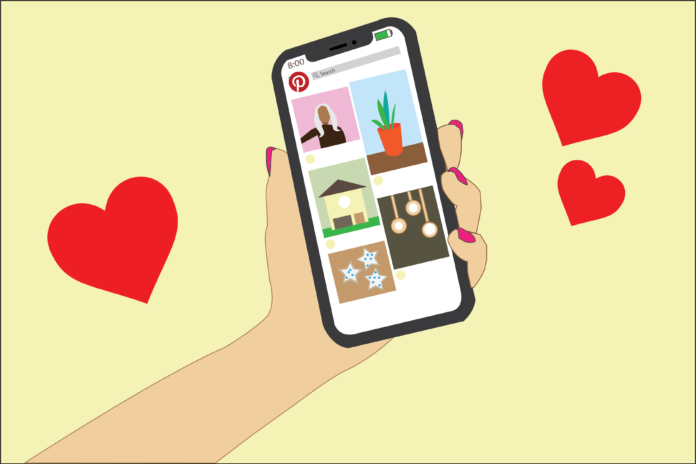The app focuses on creativity, not comparison
By CLARA FISCHER — arts@theaggie.org
Picture this: It’s Sunday night and you’ve been mindlessly switching back and forth between Instagram and TikTok for four hours as you ignore the essay that you swore would be drafted over the weekend. Your head aches and your eyes burn, but you stay glued to the screen for at least two more hours before you eventually rip yourself away and go to bed.
This might sound a little dramatic, but I’ve found myself in a similar situation more times than I’d like to admit. Social media apps can be highly addictive, given that they’re designed with algorithms that are meant to engage users and keep them hooked on their phones.
But what do you do when the Sunday scaries hit and you need something to distract you from the weekend’s questionable actions? Save reading a book or doing yoga, how are you supposed to effectively procrastinate without compromising your mental health in the process?
Enter Pinterest — the least social media-like social media I’ve ever come across.
For those who have never logged on, the layout of the app comes across as fairly standard on paper. Users create an account complete with a customizable username, bio and profile pic, and they can then create “boards” with pictures they either found on the app or uploaded themselves.
Pins come in a wide variety, with everything from baking recipes to crafts to manicures to pictures of a beach sunset found on varying boards. There is truly a niche for everyone, which goes hand in hand with a tailored feed for a user-friendly experience.
The app has evolved a bit over the past couple of years as a reflection of the changing trends; what was once all the rage (e.g. infinity scarves and EOS lip balm) is now deemed “cheugy” and has been replaced by strategically posed, oh-so-casual captures of farmers markets, nights out in New York and cowboy boots with long, flowy dresses.
Though similar to other photo-sharing apps such as Instagram in the sense that users can upload their own pictures, Pinterest differs in the central way that it delivers content. While the main focus of Instagram is the community aspect, with your feed being curated with posts from users that you follow, Pinterest is much more about the individual aesthetic of the shot and less focused on the user who took it.
That’s not to say that there aren’t some faces that are more recognizable than others on Pinterest — there are still plenty of people who have been pinned to more boards than others and enjoy successful social media careers (think Matilda Djerf and Devon Lee Carlson). However, these women didn’t gain their influencer status because of Pinterest. Their pictures consistently go viral because they already have a platform, but pictures that capture a similar vibe are equally as likely to be pinned to a board, just so long as it fits into the aesthetic the user is looking for.
Another key difference between Instagram and Pinterest stems in their underlying purposes. Instagram (whether inadvertently or not) pushes users to curate the appearance of a “perfect life” and amass a massive amount of likes while doing so. The lines between reality and posed pictures blurs, which can be straining on mental health, but Pinterest boards are so obviously made for the purposes of the aesthetic that they don’t place as much pressure to constantly be perfect. Boards are so highly curated that most users can’t internalize it as reality.
The real triumph of Pinterest is the stress-free environment it has created on social media. Logging on and getting to look at pretty pictures while daydreaming about a romanticized future brings me joy in ways that other social apps bring me insecurities. Each user can completely tailor their experience for themselves and curate aesthetically pleasing boards — however that looks for them.
Written by: Clara Fischer — arts@theaggie.org





